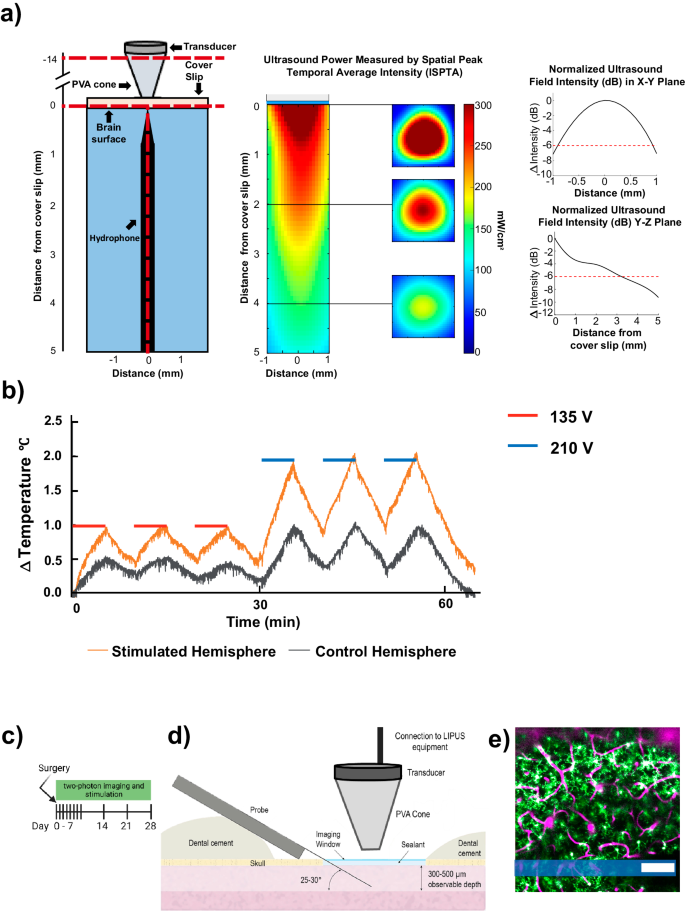2024-07-09 ピッツバーグ大学
<関連情報>
- https://news.engineering.pitt.edu/using-ultrasound-to-boost-brain-implant-biocompatibility/
- https://www.nature.com/articles/s41467-024-49709-9
低強度パルス超音波刺激(LIPUS)が皮質内微小電極植え込み後のミクログリア活性化を調節する Low-intensity pulsed ultrasound stimulation (LIPUS) modulates microglial activation following intracortical microelectrode implantation
Fan Li,Jazlyn Gallego,Natasha N. Tirko,Jenna Greaser,Derek Bashe,Rudra Patel,Eric Shaker,Grace E. Van Valkenburg,Alanoud S. Alsubhi,Steven Wellman,Vanshika Singh,Camila Garcia Padilla,Kyle W. Gheres,John I. Broussard,Roger Bagwell,Maureen Mulvihill & Takashi D. Y. Kozai
Nature Communications Published:29 June 2024
DOI:https://doi.org/10.1038/s41467-024-49709-9

Abstract
Microglia are important players in surveillance and repair of the brain. Implanting an electrode into the cortex activates microglia, produces an inflammatory cascade, triggers the foreign body response, and opens the blood-brain barrier. These changes can impede intracortical brain-computer interfaces performance. Using two-photon imaging of implanted microelectrodes, we test the hypothesis that low-intensity pulsed ultrasound stimulation can reduce microglia-mediated neuroinflammation following the implantation of microelectrodes. In the first week of treatment, we found that low-intensity pulsed ultrasound stimulation increased microglia migration speed by 128%, enhanced microglia expansion area by 109%, and a reduction in microglial activation by 17%, indicating improved tissue healing and surveillance. Microglial coverage of the microelectrode was reduced by 50% and astrocytic scarring by 36% resulting in an increase in recording performance at chronic time. The data indicate that low-intensity pulsed ultrasound stimulation helps reduce the foreign body response around chronic intracortical microelectrodes.


